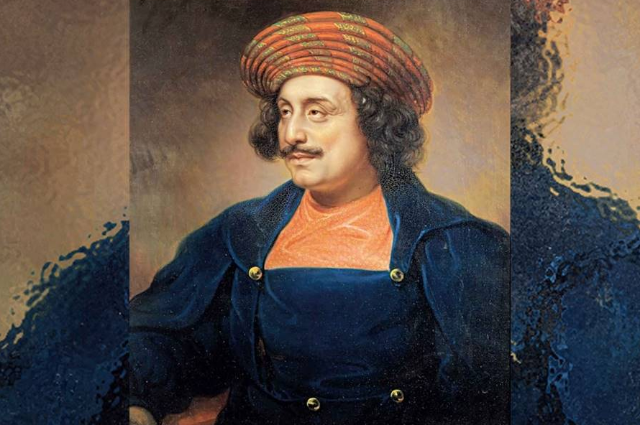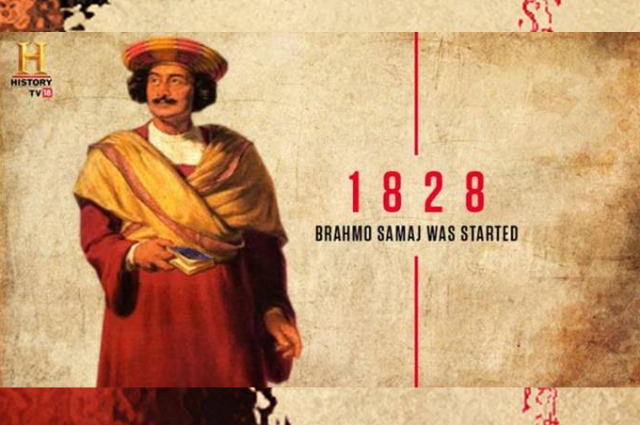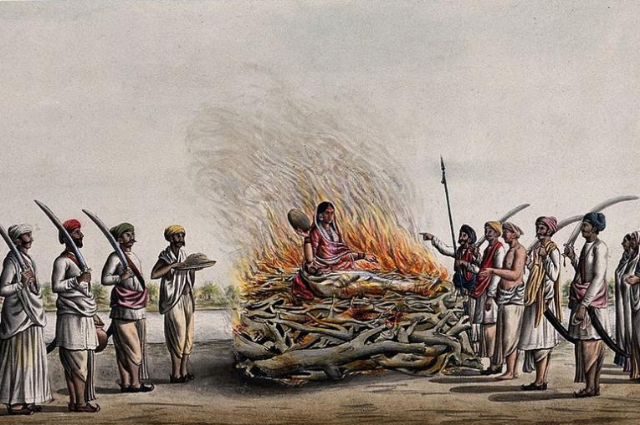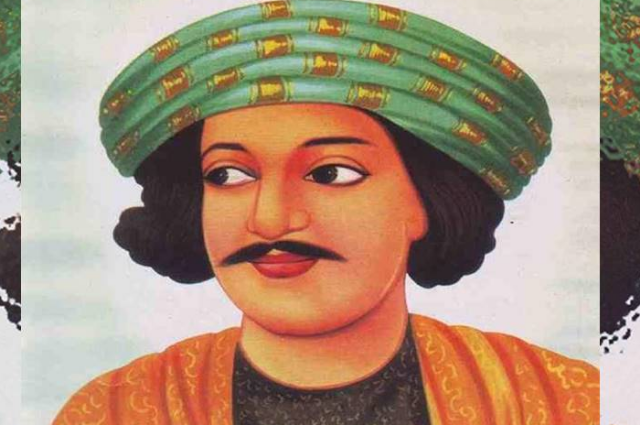Introduction
Raja Ram Mohan Roy has been referred to as the "Father of the Indian Renaissance." In India's history, the nineteenth century saw a dramatic revolution in social beliefs. The age-old ‘Sati system,' which involved a widow being burned in her dead husband's funeral pyre, was banned in India thanks to Raja Ram Mohan Roy's efforts. He was the founder of the Brahmo Samaj and was instrumental in ending polygamy and child marriage in India. In the nineteenth century, India experienced significant religious and social growth. Raja Ram Mohan Roy has been dubbed the "Father of the Indian Renaissance." Raja Ram Mohan Roy decided to rid the Hindu civilization of all foolish practices and bad customs. He was against all forms of prejudice and bad behavior directed at women. Brahmo Samaj was founded by him. Monotheism is taught by the Brahmo Samaj. Raja Ram Mohan Roy was a big supporter of western education. Raja Ram Mohan Roy grew in popularity as a result of his efforts to abolish Sati. The significance of this study is to have access to people's awareness of Raja Ram Mohan Roy. It's also helpful to have concrete evidence of Raja Ram Mohan Roy's impact on the Indian social scene. These movements were crucial in instilling cultural awareness and confidence in the public. Raja Ram Mohan Roy was a legendary figure in modern India. The eradication of Sati is one of the most important turning points in modern India's social history. The contribution of Raja Ram Mohan Roy to modern India is equally worthy of mention. Polygamy and child marriage are prohibited.
RAJA RAM MOHAN ROY AND ABOLITION OF SATI SYSTEM IN INDIA
In the year 1772, Raja Ram Mohan Roy was born into a Bengali Brahmin household. His father, Ramkanta, was a Vaishnava, hence his family was religiously diverse. Tarinidevi, his mother, came from a shivaite family. This was exceptional because shaivite and vaishnavite marriages were uncommon at the period. Raja Ram Mohan Roy began his official education in the village of Pathshala, where he studied Bengali, Sanskrit, and Persian. He then claimed to have studied Persian and Arabic at a Patna madrassa. He authored a Bengali pamphlet when he was only 15 years old denouncing idol worship, which he claimed was not recognized in the Vedas.
He traveled much and was able to get a great deal of expertise and knowledge as a result. The Raja was an outspoken supporter of press freedom. He was the founder and editor of the Bengali periodical Samvad kaumudi, which was one of the first Indian newspapers. Raja Ram Mohan Roy made a literary contribution as well. He was a prolific writer who wrote in a variety of languages. He was a brilliant linguist and stylist. He is regarded as one of the founding fathers of modern Bengali writing.
Raja Ram Mohan Roy, who is properly considered the first leader of Modern India, was at the center of this social revolution. The deep love for his life prompted Ram Mohan Roy to work for their social, religious, intellectual, and political renewal. The upper classes were egotistical, prioritizing their narrow interests over social concerns. In modern India, he was a powerful figure. Ram Mohan Roy admired and respected classical philosophical systems of all kinds. He was a professional philosopher. He wished for his compatriots, in particular, to take the rational and scientific approach to all concepts of human dignity and social fairness for all men and women. He also wanted modern economics and industry to be introduced into the country.
He was also well-versed in Jainism and other Indian religious movements and sects. He produced his famous work "Gift of Monotheists" in Persian in 1809, in which he made a powerful case against belief in several gods and advocated the worship of one God.
Raja Ram Mohan Roy was a democrat and a humanist at heart. He was a voracious reader. He studied eastern languages such as Arabic, Persian, and Sanskrit, as well as European languages such as English, French, Latin, Greek, and Hebrew. He was greatly affected by Islam's monotheistic and anti-idolatry, Sufism's deism, Christianity's ethical teachings, and Western liberal and rationalist beliefs in his religio-philosophical societal outlook.
In 1803, he released Tuhfat-ul-Muwahidin, or "A Gift to Monotheists," a Persian essay in which he describes his monotheism philosophy. He was particularly concerned with the abolition of social ills such as sati, child marriage, and polygamy. When the letter adopted legislation banning sati in 1829, he fully supported Governor-General Lord William Bentick.
In 1814, he arrived in Calcutta and quickly gathered a group of young men with whom he founded the Atmiya Sabha. Then fight the religious and social evils that were widespread among Bengal's Hindus. He propagated idol worship, castle rigidity, and the proliferation of pointless religious ceremonies in particular. He believed that all of the Hindu scriptures promoted monotheism or the worship of one god. He felt that Vedanta's philosophy was founded on the idea of reason. Ram Mohan Roy was the first to apply rationalism to Christianity, specifically to the aspect of blind faith.
Sati campaign by Raja Ram Mohan Roy
He began a campaign to abolish the ‘Sati System,' in which the wife of the deceased burnt herself in her husband's funeral pyre. He also attacked polygamy, casteism, and the freedom of Hindu widows to remarry, among other things. Lord William Bentick, the then Governor-General of British India, influenced the passage of the famous Regulation XVII in 1829.
Sati was declared illegal and punishable by the courts. Raja Ram Mohan Roy was a strong supporter of western education in India. As a result, he became a pioneer in both English education and enlightened journalism in India. He also founded and edited the “Samvad Kaumudi,” a Bengali journal. In 1828 A.D., he founded the Brahmo Samaj to preach his ideals.
The goal of this research is to learn more about Raja Ram Mohan Roy's personality, as well as the sati system and its abolishment. Finally, to research Raja Ram Mohan Roy's approach to polygamy and child marriage, as well as the Brahmo Samaj's activities and features.
The Brahma Sabha, later known as the Brahma Samaj, was founded to purify Hinduism and preach monotheism, or belief in just one God. The Vedas and Upanishad were to be the two pillars upon which the new civilization would be built. It also collaborated with other religions' teachings. The Brahmo Samaj emphasized human dignity, rejected idolatry, and condemned societal evils like Sati practice. Ram Mohan Roy had a brilliant mind. In addition, he was a doer. He then set the groundwork for Indian society's transformation.
The historic agitation he organized against the human custom of women becoming Sati was the best example of his life-long struggle against social evil. Beginning in 1818, he set out to enlighten the public on the issue. When the Orthodox Hindus petitioned parliament to put Bentinck's measure banning the Sati ceremony on hold, parliament agreed. He was a staunch supporter of women's rights. He decried women's enslavement and rejected the widespread belief that women were intellectually or morally inferior to men. Polygamy, caste rigidity, and child marriage were all targets for him. He advocated that women be allowed the power to inherit and own property to elevate their status responsible for the formation of modern India. Raja Ram Mohan Roy and Debendranath Tagore initiated the Bengal Renaissance of the 19th century on August 20, 1828, as a reformation of the prevalent Brahmonism of the period, pioneering the religious, social, and educational advancement of the Hindu Community in the 19th century.
Abolition of the sati system
Virtue, purity, and allegiance to her husband are the ultimate values for a woman in Indian society. The custom of a wife immolating herself on her deceased husband's funeral pyre as proof of her loyalty derives from this practice. The practice of a woman burning herself on the funeral pyre of her departed husband or alone after his death is now known as sati. “Sati” was originally characterized as a lady who was “true to herself or her ideals.” The appellation "Sati" is given to a devout and moral woman. Sati comes from the ancient Indian word Sat, which signifies truth. Rather than its original meaning of "virtuous woman," Sati has evolved to mean both the act of immolation of a widow and the victim.
The Hindu goddess Sati is always associated with the term "sati." Sati was Lord Shiva's wife who consumed herself on the holy fire, according to Hindu mythology. She did this in retaliation for her father's unwillingness to invite Shiva to the Gods' gathering devotion”.
Roy was present when his brother's widow was burned alive on her husband's funeral pyre in 1811. Three years later, he retired and focused his efforts on protesting the tradition of women dying as Sati. Raja Ram Mohan Roy was the first Indian to object against this practice. Raja Ram Mohan Roy was a staunch opponent of the Sati practice. He argued that this was in direct violation of a woman's right to live in society as a human being. As a result, he opposed Sati's age-old bad practice. It is believed that Raja Ram Mohan Roy once had to see his loving sister-in-death law's on his brother's funeral pyre. His mind is shattered as a result of this tragedy.
As a result, he used this personal experience to fuel his efforts to end the horrible social custom of sati. Raja Ram Mohan Roy did everything he could at the time to put an end to and outlaw the practice of Sati. He made numerous attempts to inform people against the Sati system. Finally, in the year 1829, Lord William Bentick passed a statute prohibiting Sati. As a result, Raja Ram Mohan Roy's efforts were rewarded. Huge changes have occurred in Indian society, and the Hindu religion is now being considered. It can be regarded as a watershed moment in India's social history.
Despite the protests of orthodox Hindus, he continued his anti-custom propaganda. Finally, in 1829, Lord William Bentick, the governor-general of India, established a law prohibiting the practice of Sati. Sati has become prohibited and punishable as culpable homicide as a result of this low. Raja Ram Mohan Roy was also an outspoken opponent of child marriage and a proponent of widow remarriage. The eradication of Sati is one of the most important turning points in modern India's social history.
CONCLUSION
Raja Ram Mohan Roy is a renowned historical person who worked tirelessly to develop India and declared that he would violate Hindu tradition. He, who is properly considered the first great leader of modern India, was at the Centre of this awakening. To charge the society, he conducted a lot of social reform and strove to improve the status of women in India. Raja Ram Mohan Roy attempted to propagate the monotheistic doctrine in religion.
He was a staunch opponent of social ills like Sati, child marriage, caste rigidity, and so on. The contributions of Raja Ram Mohan Roy to modern India are also worth mentioning. He was a pioneer who attempted to make significant advances in the 19th century's socio-religious field. The eradication of Sati is one of the most significant turning points in modern India's social history. In general, we can conclude that Raja Ram Mohan Roy was a great man of Indian history and the torch bearer of the Indian Renaissance. His sphere of influence was very broad, including the socio-political and religious arenas.
References
- Bhattacharya, Subhas. “Indigo Planters, Ram Mohan Roy and the 1833 Charter Act.” Social Scientist, vol. 4, no. 3, 1975, pp. 56–65. JSTOR,
- Majumdar, J. K. “RAJA RAM MOHAN ROY AND HIS ‘TIMOUR MISSION.’” Proceedings of the Indian History Congress, vol. 3, 1939, pp. 1532–1544. JSTOR,
- Fatima, Tausif, and Tousif Fatima. “WOMEN'S RIGHTS AND HINDU LAW OF INHERITANCE: THE APPROACH OF RAMMOHUN ROY.” Proceedings of the Indian History Congress, vol. 70, 2009, pp. 643–648. JSTOR,
- Sutherland, Sally J. “Suttee, Sati, and Sahagamana: An Epic Misunderstanding?” Economic and Political Weekly, vol. 29, no. 26, 1994, pp. 1595–1605. JSTOR,
- Panikkar, K. N. “Culture and Consciousness in Modern India: A Historical Perspective.” Social Scientist, vol. 18, no. 4, 1990, pp. 3–32. JSTOR,
- Fisch, Jörg. “Dying for the Dead: Sati in Universal Context.” Journal of World History, vol. 16, no. 3, 2005, pp. 293–325. JSTOR
- SUDA, J. P. “THE ORIGINS AND SIGNIFICANCE OF THE NATIONAL MOVEMENT IN INDIA.” The Indian Journal of Political Science, vol. 19, no. 2, 1958, pp. 134–141. JSTOR,
- Paramarthalingam, C. “THE SATI AND ITS ABOLITION IN TAMIL NADU IN THE NINETEENTH CENTURY.” Proceedings of the Indian History Congress, vol. 40, 1979, pp. 890–894.
- Narain, V. A. “PUBLIC ASSOCIATIONS AND SOCIAL REFORM IN BENGAL IN THE FIRST HALF OF THE NINETEENTH CENTURY.” Proceedings of the Indian History Congress, vol. 28, 1966, pp. 434–440.,
- Namboodiripad, E. M. S. “Perspective of the Women's Movement.” Social Scientist, vol. 4, no. 4/5, 1975, pp. 1–8. JSTOR,
- Kapadia, K. M. “A Perspective Necessary for the Study of Social Change in India.” Sociological Bulletin, vol. 6, no. 1, 1957, pp. 43–60. JSTOR,




